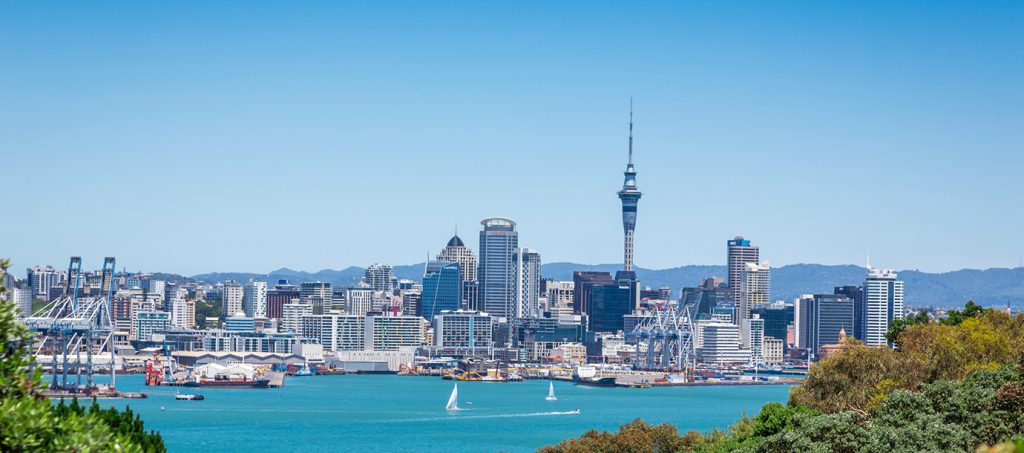There are strong indications that the construction industry faces some serious challenges, according to Alan McMahon

Much of the growth will occur in Auckland, making up 41 percent of the total national construction value and 40 percent of dwelling unit consents in 2023
Ebert Construction hit headlines recently when announcements were made that they had entered receivership.
Recorded as the fourth largest construction company in the country, they were working on 15 projects including the Indian High Commission in Wellington, a mental health unit in Auckland’s Middlemore Hospital, and the Union Green apartments in Auckland.
Their downfall is said to be due to poor performing contracts leading to cost overruns, but full details are still to come.
Tricky business
This recent announcement adds to a list of construction related firm failures (interiors and prefab manufacturing), which have hit headlines over the past month or so.
Construction can be a tricky business, and it can be a case of big risk, little reward if pricing, margins, capacity, and timing are out of sync with market realities.
One of these issues in particular receiving a lot of airtime has been cost inflation, which continues to exceed many people’s expectations.
The latest construction cost price index shows an annual 4.6 percent increase in March 2018 for residential buildings and 4.3 percent for non-residential buildings.
The increase in non-residential construction costs is set to continue at a rate of 4.7 percent per year in early 2019. By late 2020, this is set to ease to 3.5 percent a year, according to NZIER’s forecasts.
Many would argue rates are higher
Hiring intentions remain positive, but access to skilled labour is still a concern for many, ultimately adding to labour costs.
When conditions are challenging, the added development intricacies involved in high-rise commercial and residential projects can create obstacles that lead to a reduction in future supply and/or extend project timeframes.
The industrial sector can be less affected by this, but the sector faces its own added challenges with restricted land availability and land values appreciating at record highs in many locations.
Measures are being taken to reduce these challenges and a shakeup of the industry is being called for, but will it be in time and enough to stop further failures and alleviate pent-up demand?
Growth still expected
Despite the woes, construction activity is expected to grow steadily over the next few years.
According to the latest Ministry of Business, Innovation and Employment (MBIE) National Construction Pipeline report, the construction pipeline in New Zealand will grow close to 10 percent from 2018 forecasts, to an estimated $41 billion in 2023.
Activity in the housing market is forecast to rise with 43,000 consents to be issued in 2023, reaching a new high.
This will be led by apartment developments, which is projected to make up 60percent of all dwellings by 2023, outstripping that of detached houses.
Much of the growth will occur in Auckland, making up 41 percent of the total national construction value and 40 percent of dwelling unit consents in 2023, according to MBIE.
The same report shows Auckland, Waikato and Bay of Plenty will contribute 61 percent of the non-residential construction value by 2023.
Canterbury is expected to slowly decline from current highs throughout 2018 to 2023 as rebuild activity moderates.
Office overview
Coliers latest vacancy survey indicates Auckland’s overall CBD office market remains in a period of low vacancy at 6.2% in June 2018, albeit, up slightly compared to last year.
Prime vacancy fell 0.3 percentage points from a year ago reaching 3.5 percent in June 2018.
Conversely, secondary vacancy climbed 1.2 percentage points to 8.1 percent for the same period, explaining the overall increase in office vacancy. Percent.
Wellington’s overall CBD office vacancy decreased marginally to 7.7%.
This was despite new supply with the completion of three prime office buildings, adding around 25,200 sqm in the Core precinct and 3,200 sqm in the CBD Fringe precinct.
Retail review
New Zealand’s growing population, record tourist numbers and strong economic growth over the past 12 months have continued to bolster demand for goods and services.
Latest figures from Statistics New Zealand finds total electronic card transactions by value increased 3.8 percent for the June 2018 quarter, relative to the same quarter a year ago.
CPI appreciated a modest 1.5 percent over the same period indicating growth in transactional value represents continued consumer demand.
The retail services category marked the greatest increase (6.3 percent) followed closely by the hospitality industry (5.7 percent).
Industrial information
According to the BNZ – BusinessNZ Performance of Manufacturing Index (PMI), New Zealand’s manufacturing sector has remained in continuous positive expansion since October 2012.
The seasonally adjusted PMI for June 2018 was 52.8, a decrease of 1.5 points in May.
This still marks as a positive score with PMI above 50 considered expansionary.
The services sector is also thriving as indicated by the BNZ-BusinessNZ Performance of Services Index (PSI), which measures New Zealand’s services sector (such as supplier deliveries).
The seasonally adjusted PSI for June 2018 was 52.8, a decrease of 4.3 points relative to May, but once again still positive and in expansion mode since August 2010.
Alan McMahon is National Director Research & Consulting at Colliers International, a leading commercial real estate company and has you covered worldwide, with 396 offices in 66 countries



